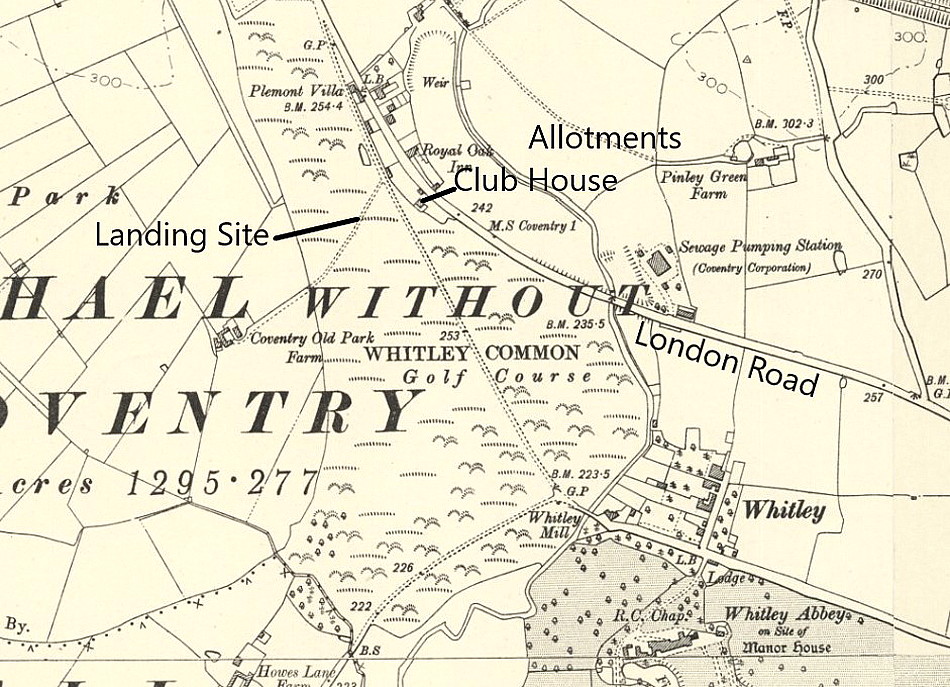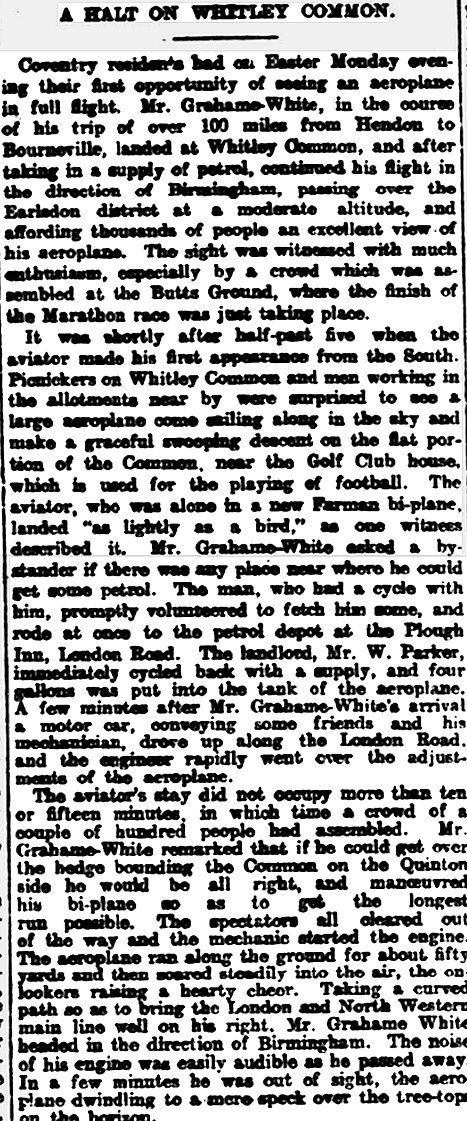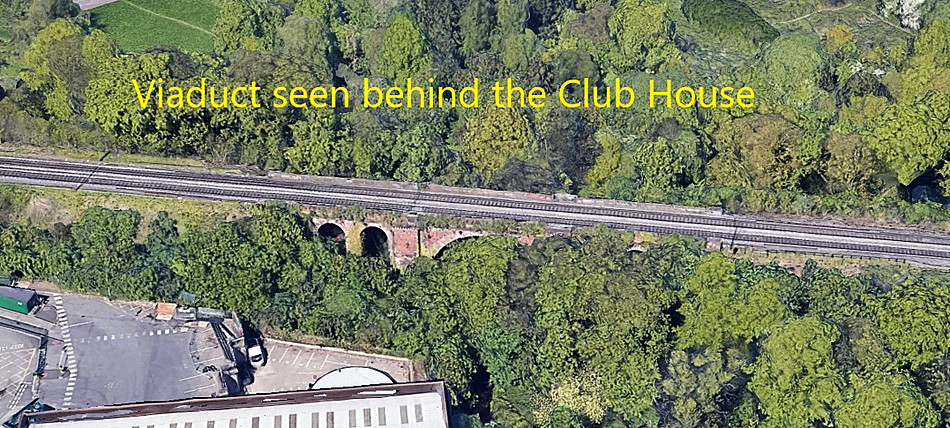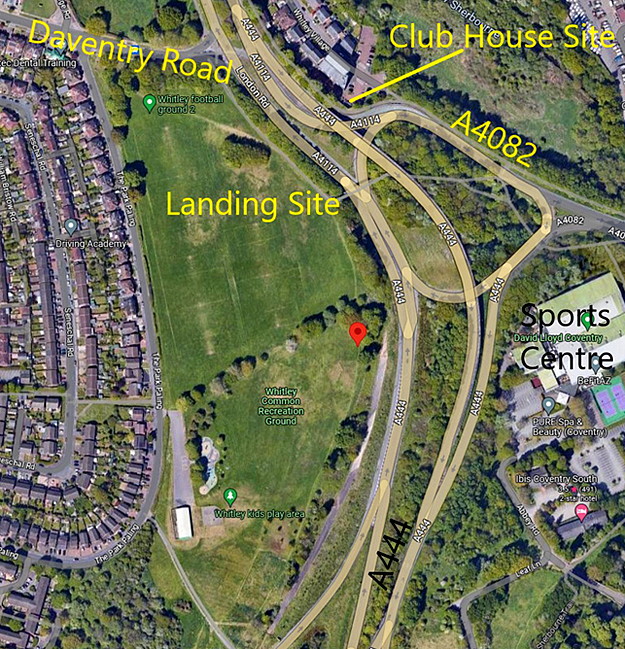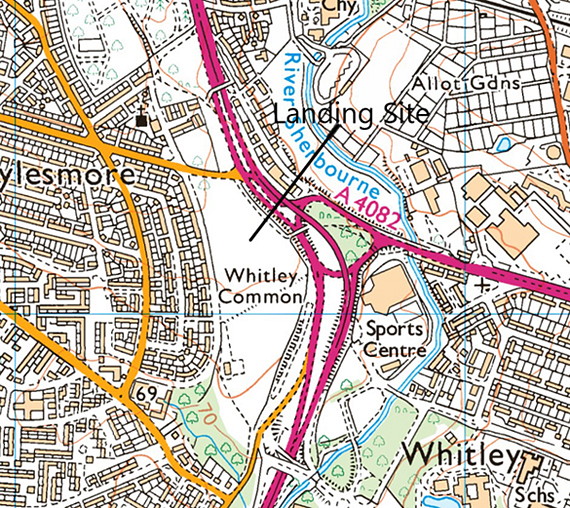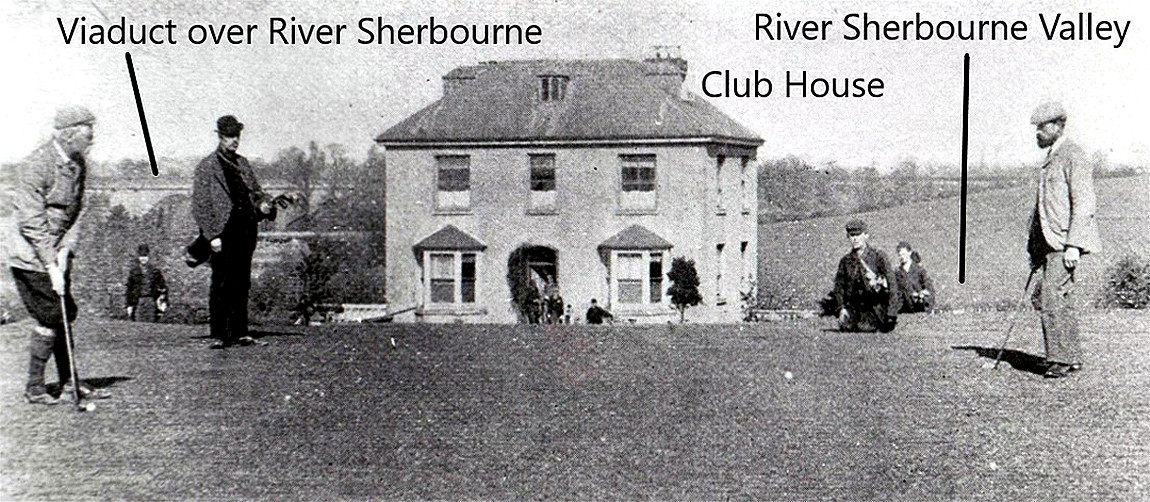Whitley Common
WHITLEY COMMON: Very temporary Landing Ground
Location: About 1.25nm SSE of Coventry city centre
Period of operation: 17th April 1911
A MICHAEL T HOLDER GALLERY
In September 2023, whilst researching the flight made by Claude Grahame-White from HENDON to BOURNVILLE, Mike Holder, a great friend of this 'Guide', discovered evidence of where Grahame-White had landed to obtain more petrol. As we might expect, alongside a main railway line.
The article was published in the Coventry Evening Telegraph on the 18th April 1911. The fourth item was obtained from Coventry Archives.
The photo was also obtained from the Coventry Archives. The area view is from my Google Earth © derived database.
NOTES: After being invited to attend and open the model flying exhibition at BOURNVILLE, Claude Grahame-White decided to fly up, leaving HENDON at 05.45 on a Farman biplane. It wasn't long before he encountered fog, and made a forced landing at DRAYTON PARSLOW in Buckinghamshire, (see seperate listing). In doing so he damaged his machine, (as aeroplanes were usually called in those days), but repairs were made fairly swiftly and he set off again in the afternoon.
Many years ago I found a report that he then landed at Dunchurch to obtain petrol. But, the article in the Coventry Evening Standard above, clearly states that he actually landed at WHITLEY COMMON. Dunchurch is roughly 9.5nm SE of WHITELY COMMON. The newspaper article states he was only on the ground for around ten to fifteen minutes, but this is obviously incorrect? Even so, his stay here was certainly short lived.
These days we need to bear in mind that powered aviation was still very much in its infancy, the first recorded flight in the UK being in 1909. Aerial navigation techniques were virtually non-existent and to a large extent following main railway lines was the preferred option. All very well until a major rail junction came along - then which line to take? For the London to Manchester Daily Mail air race, the year before, the railway companies painted some of the rail sleepers white for the pilots to follow.
As I was taught when learning to fly, pilots do not get lost, but, may well be temporarily uncertain of their position. Certainly the case for Grahame-White, who arriving in Birmingham, (hard to miss from Coventry), had to land to ask directions, in that case at SPARKHILL, (see seperate listing). It appears he landed at BOURNVILLE at 18.35. So, his average speed for the trip being around 9mph.
In many respects nothing much has changed over the preceeding century, especially for many private pilots, . When I was flying it was often said - "Time to spare - go by air." And not just on long trips either. I could write a book about all the various problems that resulted in setbacks. However, one option we mostly do not have have in recent years, is to land in a field to ask directions. This said, although gradually dying out after WW1, I have found many accounts of pilots doing so, even into the 1930s. Including a few RAF crews.
We'd love to hear from you, so please scroll down to leave a comment!
Leave a comment ...
Copyright (c) UK Airfield Guide














